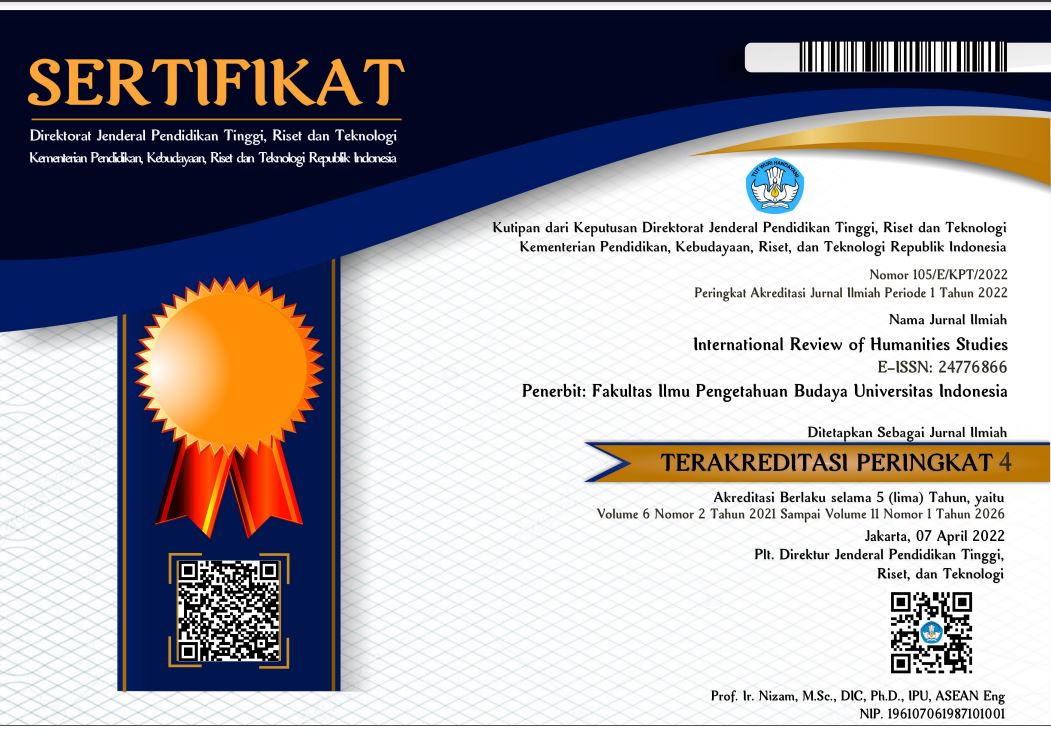International Review of Humanities Studies

Abstract
Culinary practices have always been considered as social and cultural activities signifying ideas of continuity and transformation regarding one‟s culture and identity. As migration happens, people move from their hometown and recreate familiar food and flavors in their new home. Therefore, the study of culinary practices will reveal the dynamics of constant negotiation between having to trace back the familiar taste, for example by using inherited recipes, with the necessity to innovate and reproduce meals from their hometown with new ingredients and materials found in the new place. Furthermore, in an urban setting that has been heavily influenced with a variety of culinary practices from other locales in Indonesia or from other countries, culinary practices in Jakarta could no longer be analyzed as merely everyday activities as they have become an arena of contestation and negotiation. This research discusses how two up-scale restaurants, Suntiang (a Padangnese-Japanese fusion restaurant) and Marco (a self-proclaimed Padang peranakan restaurant), re-inscribe Padangnese cuisines and make new meanings on „old‟ traditional delicacies.
References
Andaya, Leonard Y. (2008). Leaves of the same tree: trade and ethnicity in the Straits of Melaka. University of Hawaii Press.
Bak, Sangmee. (2015). Exoticizing the Familiar, Domesticating the Foreign. Re-orienting Cuisine: East Asian Foodways in the Twenty-First Century, 3, 170.
Bell, David. (2002). Fragments for a new urban culinary geography. Journal for the Study of Food and Society, 6(1), 10-21.
Caesarlita, Diandra. (2015), “Menikmati Makanan Padang Bergaya Masakan Jepang di Suntiang Express,” Accessed from http://lifestyle.sindonews.com/read/956533/166/menikmati-makanan-padang bergaya-masakan-jepang-di-suntiang-express-1422363080/10
Cwiertka, Katarzyna J. (2005) From Ethnic to Hip: Circuits of Japanese Cuisine in Europe, Food and Foodways, 13:4, 241-272.
Handayani, Indah. (2015). “Menu Padang Peranakan di Restoran Marco,” Accessed from http://www.beritasatu.com/kuliner/322725-menu-padang-peranakan-di- restoranmarco.html
Juliansyah, F. (2016). “Racikan Resep Asli di Marco Padang Peranakan,” Accessed from http://www.infonitas.com/kuliner/racikan-resep-asli-di-marco-padang-peranakan/14573
Kato, Tsuyoshi. (1982). Matriliny and Migration. Evolving Minangkabau Traditions in Indonesia. Ithaca, NY/London, Cornell University Press.
Klopfer, Lisa. (1993). Padang restaurants: Creating “ethnic” cuisine in Indonesia. Food and Foodways, 5(3), 293-304
Moisio, Risto., Eric J. Arnould & Linda L. Price (2004). Between Mothers and Markets Constructing family identity through homemade food. Journal of Consumer Culture, 4(3), pp. 361- 384.
Naim, Mochtar. (1984). Merantau: Pola migrasi suku Minangkabau. Yogyakarta, Gadjah Mada University Press.
Ng, Wai-Ming. (2001). Popularization and localization of sushi in Singapore: An ethnographic survey. New Zealand Journal of Asian Studies, 3, 7-19. Ottenbacher,
Michael. C., & Robert J. Harrington. (2009). Institutional, cultural and contextual factors: Potential drivers of the culinary innovation process. Tourism and Hospitality Research, 9(3), 235-249.
Salazar, Noel B. (2016). The (Im)Mobility of Merantau as Sociocultural Practice in Indonesia, 21-42. In N.G Bon and J. Repic (eds), Moving Places. Relation, return and belonging. New York, Berghan Books.
Van Otterloo, Anneke H. (2002). Chinese and Indonesian Restaurants and the Taste for Exotic Food in the Netherlands. Asian Food: The Global and the Local, 153-166.
Warde, Allan & Lydia Martens (1998). The prawn cocktail ritual. Consuming Passions: Food in the Age of Anxiety, 118-122.
Recommended Citation
Tambunan, Shuri Mariasih Gietty; Widhiasti, Maria Regina; Bachrioktora, Yudi; and Utami, Nila Ayu
(2019)
"URBAN CULTURAL OMNIVORES, UPSCALING ETHNIC FOOD AND CULINARY REPRODUCTION IN MARCO AND SUNTIANG,"
International Review of Humanities Studies: Vol. 4:
No.
1, Article 16.
Available at:
https://scholarhub.ui.ac.id/irhs/vol4/iss1/16
Included in
Art and Design Commons, Education Commons, Life Sciences Commons, Other Arts and Humanities Commons, Social and Behavioral Sciences Commons


